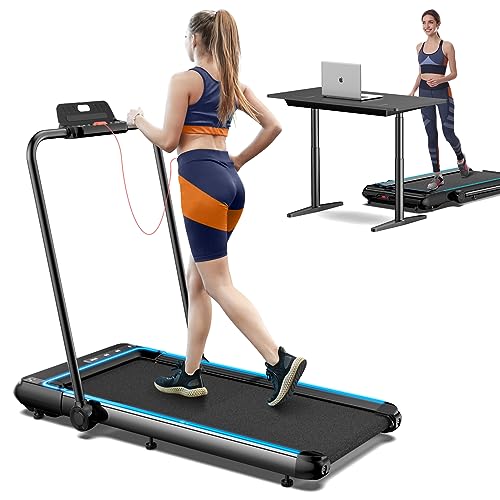10 Inspirational Graphics About New Treadmill

The Essential Guide to Buying a New Treadmill: What You Need to Know
As fitness enthusiasts continue to seek flexible and efficient methods to keep their physical health, treadmills remain a staple in home and industrial health clubs alike. The technology and functions of treadmills have advanced substantially in current years, making now an exceptional time to think about buying a new treadmill. This post aims to direct prospective purchasers through vital factors to think about, various kinds of treadmills available, and frequently asked concerns to ensure they make an informed choice.
Comprehending Treadmill Types
Before diving into specific brand names, it's worth understanding the primary types of treadmills readily available in the market. This summary will help individuals determine which type best fits their fitness requirements and budget plan.
1. Handbook Treadmills
- Description: These treadmills do not depend on electrical energy and are powered exclusively by the user's movement.
- Pros:
- Generally less expensive.
- Compact and light-weight, making them simple to store.
- Cons:
- Limited includes compared to motorized treadmills.
- Less appropriate for high-intensity exercises.
2. Motorized Treadmills
- Description: These treadmills come equipped with electric motors that facilitate movement and enable adjustable speed settings.
- Pros:
- Offer a broad variety of speed and incline alternatives.
- Frequently geared up with advanced innovation, including workout programs and heart rate displays.
- Cons:
- More pricey and require more maintenance.
- Heavier, making them hard to move.
3. Folding Treadmills
- Description: These treadmills can be folded for benefit, making them an exceptional option for those with limited space.
- Pros:
- Space-saving style.
- Still uses motorized alternatives.
- Cons:
- May compromise some stability and toughness for portability.
4. Industrial Treadmills
- Description: Designed specifically for gyms and fitness centers, these treadmills are built with more resilient products.
- Pros:
- High-quality building and durability.
- Features designed for intensive usage.
- Cons:
- Generally more costly and bigger in size.
Comparison Table of Treadmill Types
| Treadmill Type | Power Source | Secret Features | Price Range | Suitable For |
|---|---|---|---|---|
| Manual | None | Standard performance | ₤ 100 - ₤ 500 | Novices, spending plan users |
| Motorized | Electric | Adjustable speed/incline | ₤ 500 - ₤ 3,000 | All fitness levels |
| Folding | Electric | Space-saving features | ₤ 300 - ₤ 1,500 | Minimal area users |
| Business | Electric | Resilience and performance | ₤ 1,500 - ₤ 8,000 | Fitness centers, heavy use |
Key Features to Look For
When buying a new treadmill, several crucial features must be considered:
- Motor Power (HP): A more powerful motor (at least 2.5 HP) is important for running and for users who prepare to use the treadmill routinely.
- Running Surface: Consider the size of the belt. A longer and broader running surface area can accommodate longer strides and offers much better security.
- Slope Options: Adjustable slope can add intensity to workouts and target different muscle groups.
- Exercise Programs: Many treadmills use built-in workout programs that can direct users through numerous exercises and regimens.
- Show Features: A clear display enables users to track their speed, range, calories burned, and heart rate more easily.
- Cushioning: Adequate shock absorption can decrease the risk of injury and supply a more comfy running experience.
- Innovation Integration: Features like Bluetooth connection, mobile app combination, and built-in speakers can improve the exercise experience.
Frequently Asked Questions (FAQs)
Q1: How much should I spending plan for a treadmill?
A: Budget can differ based upon features and quality. Manual treadmills start around ₤ 100, while motorized models can range from ₤ 500 to ₤ 3,000, depending upon sophisticated functions.
Q2: How typically should I maintain my treadmill?
A: Regular upkeep, consisting of lubricating the belt and examining the motor, should be done monthly. Examine the treadmill for wear and tear frequently.
Q3: Can I reduce weight with a treadmill?
A: Yes, routine use of the treadmill, integrated with a healthy diet, can help with weight loss. Incorporating Treadmills For Home increases strength and calorie burn.
Q4: Is it much better to work on a treadmill or outdoors?
A: Both have advantages. Treadmills offer a regulated environment and cushioning, while outdoor running offers varied surroundings and natural inclines.
Q5: Do I need special shoes for utilizing a treadmill?
A: While particular treadmill shoes aren't required, wearing good-quality running shoes created for assistance, cushioning, and stability is advisable.
Investing in a new treadmill can significantly impact one's physical fitness journey, supplying chances to work out in the house regardless of weather condition conditions. By understanding the types of treadmills offered and thinking about necessary functions, individuals can select a design that fits their way of life and physical fitness objectives. Whether going for casual walks or extreme running sessions, the ideal treadmill can change workout regimens, making them more pleasurable and effective. With the increase in technology and innovative designs, the treadmill remains a classic and important tool in individual fitness.

